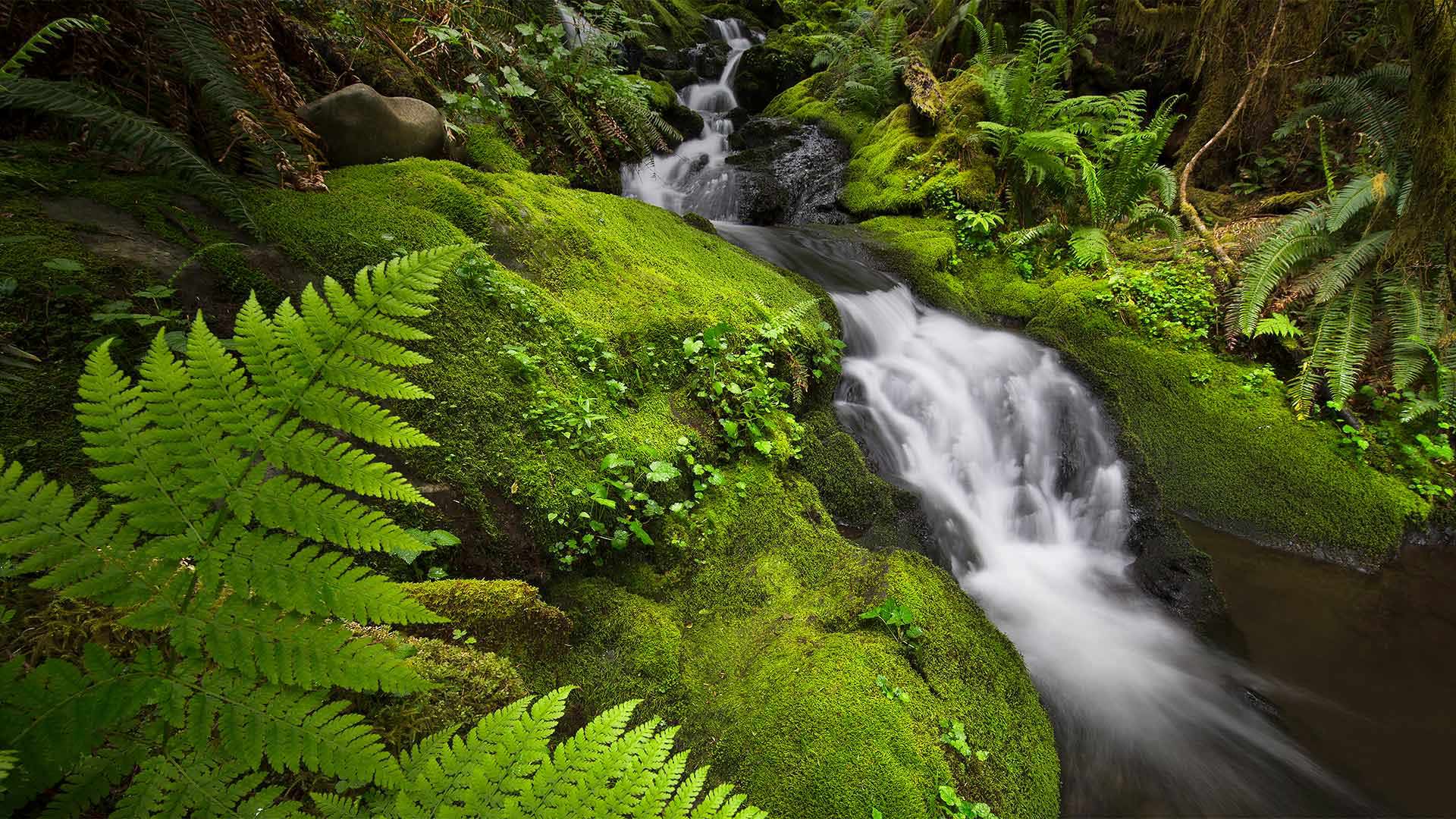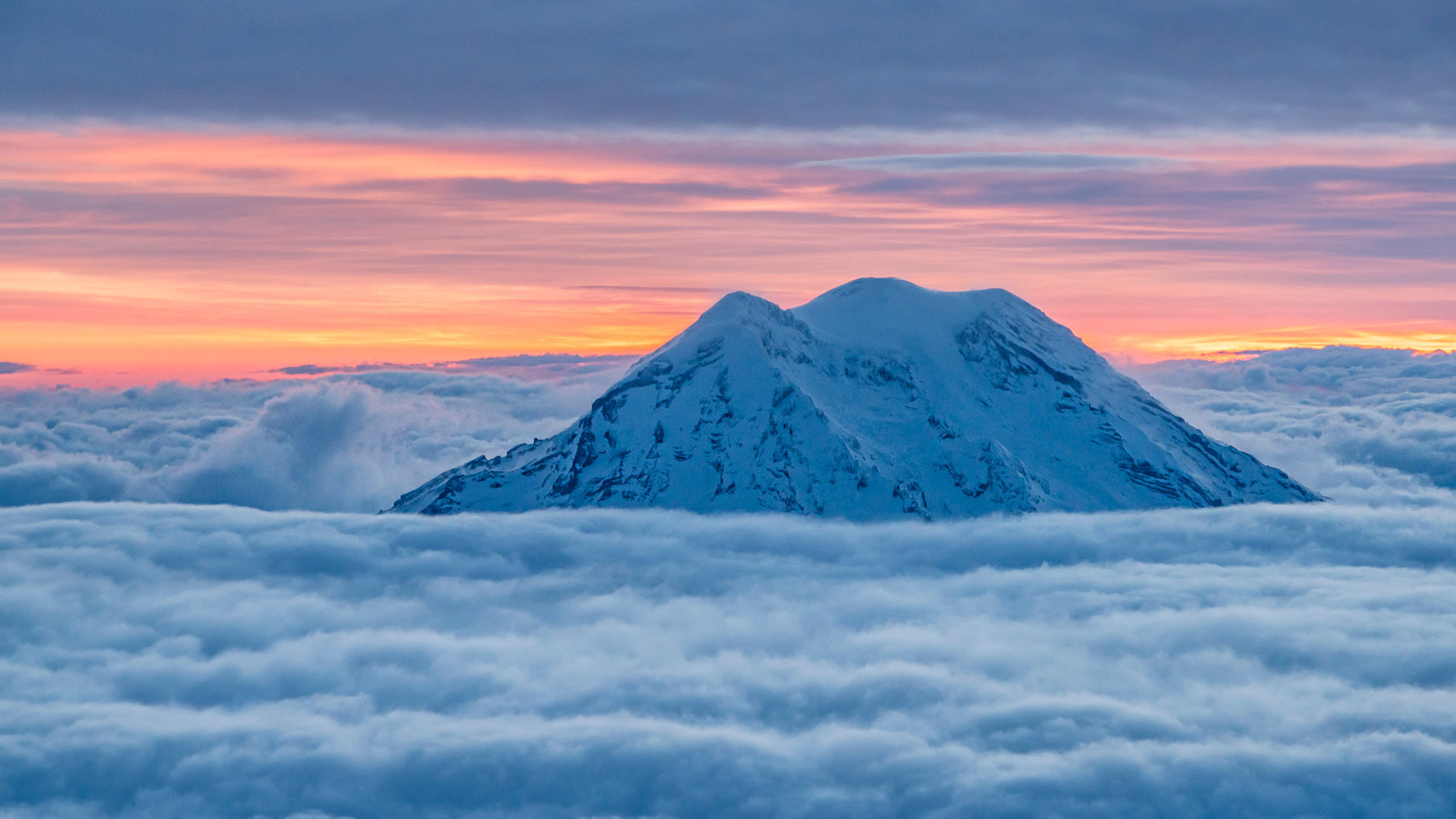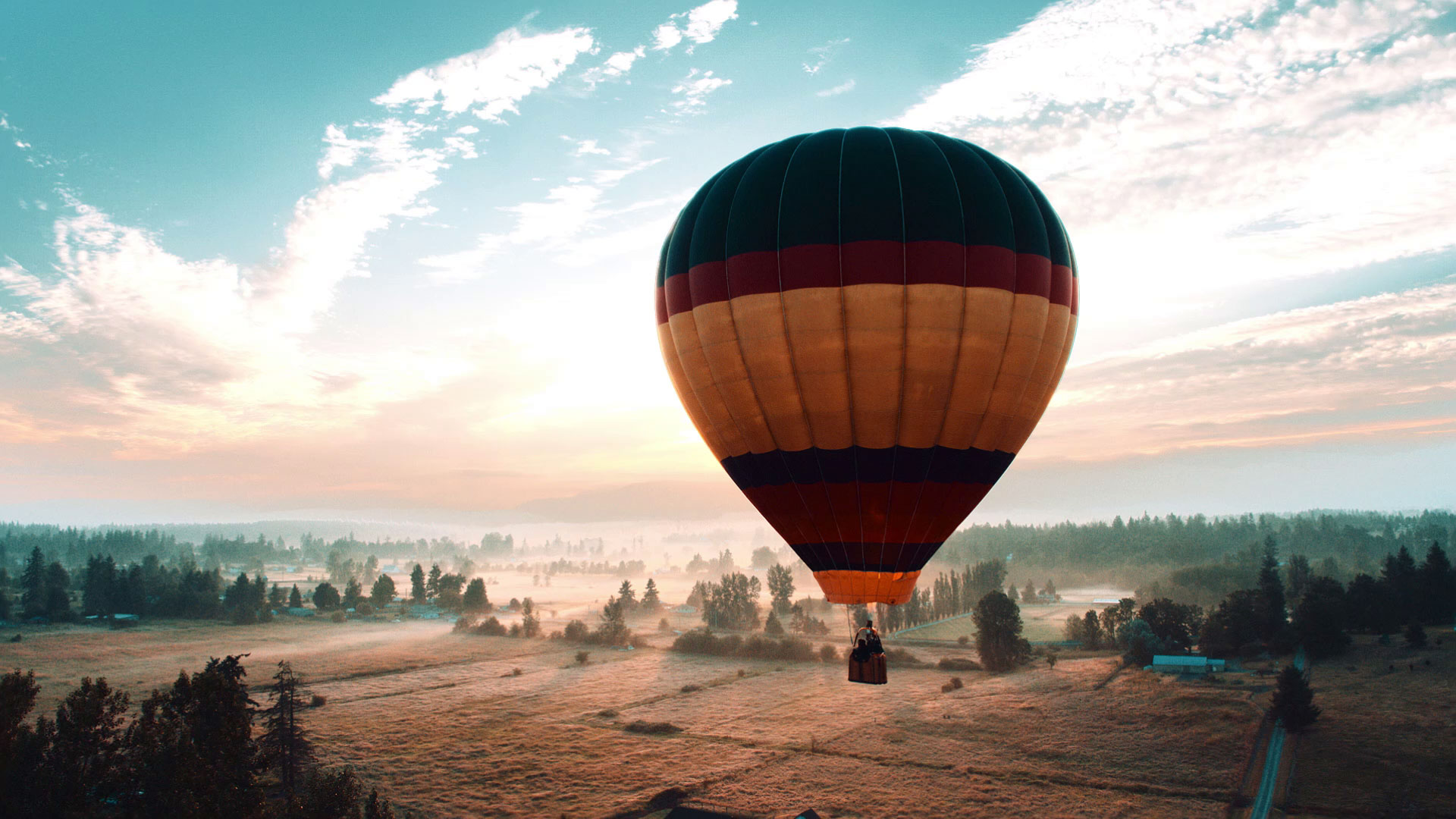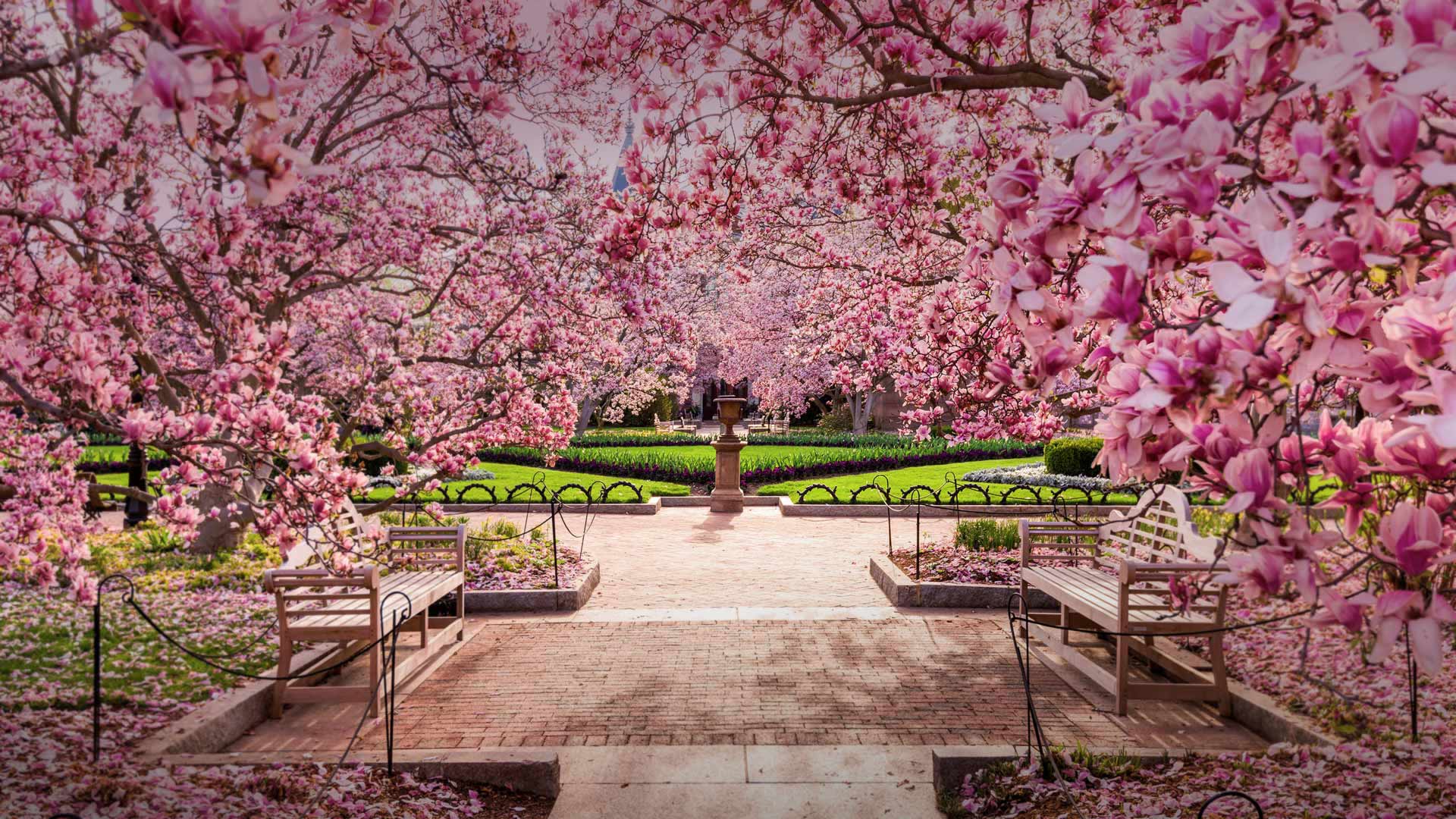红宝石海滩的日落,华盛顿州奥林匹克国家公园 Sunset at Ruby Beach in Olympic National Park, Washington state (© Adam Mowery/Tandem Stills + Motion)
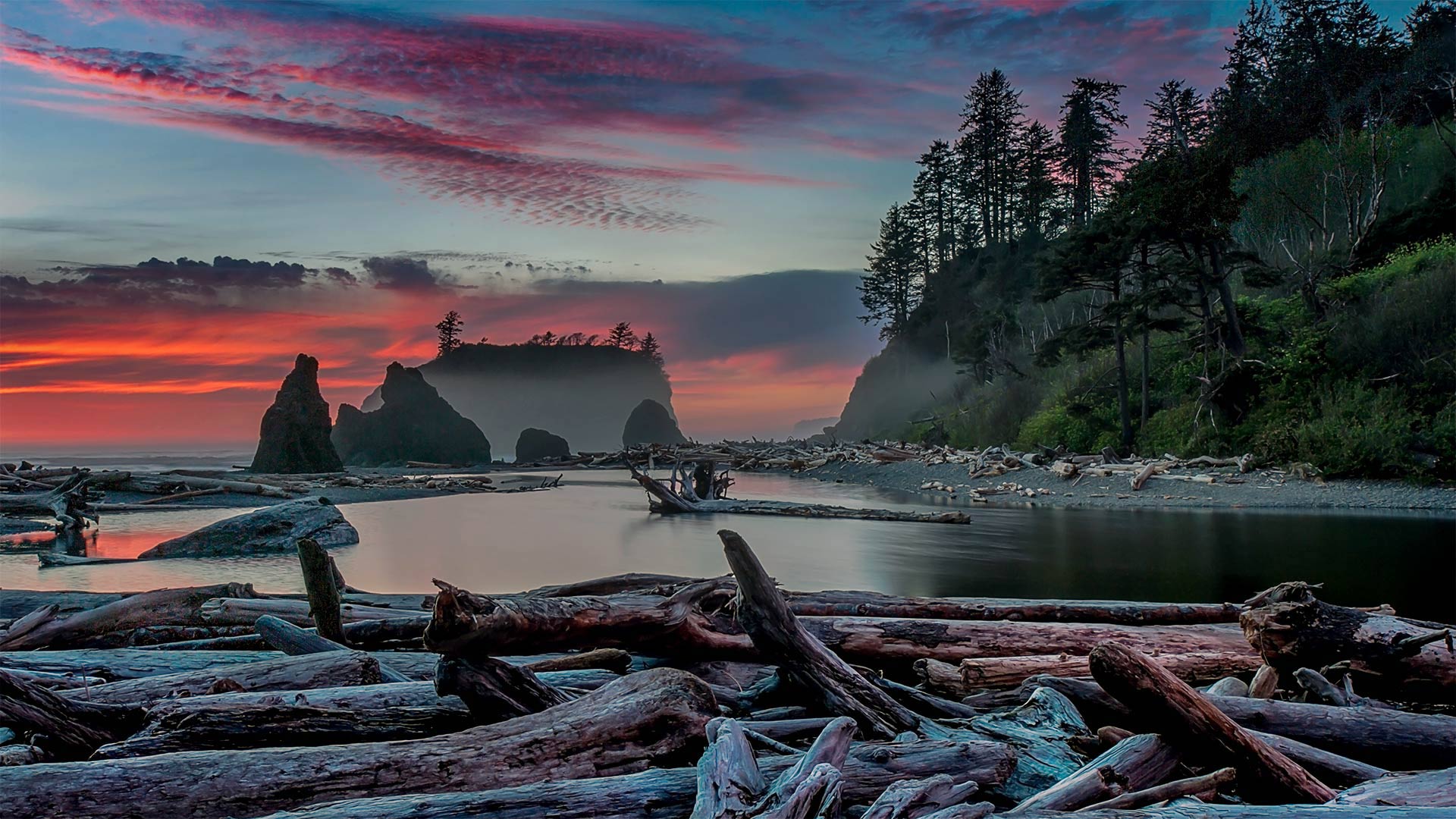
红宝石海滩的日落,华盛顿州奥林匹克国家公园 Sunset at Ruby Beach in Olympic National Park, Washington state (© Adam Mowery/Tandem Stills + Motion)
Red skies at Ruby Beach
Reddish crystals in the sand inspired the name of Ruby Beach, one of the coastal stops within Olympic National Park in Washington state. A few miles from the shore is Destruction Island, where birds such as rhinoceros auklets may stop and rest after a day of gobbling up krill and squid in the cold Pacific waters. While the park includes miles of colorful Pacific coastline, it's also famous for the Hoh Rainforest, an inland temperate forest notable for its towering old-growth hemlock and spruce trees.
Time-lapse video of lenticular clouds over Mount Rainier, Washington (© Delrious/Shutterstock)
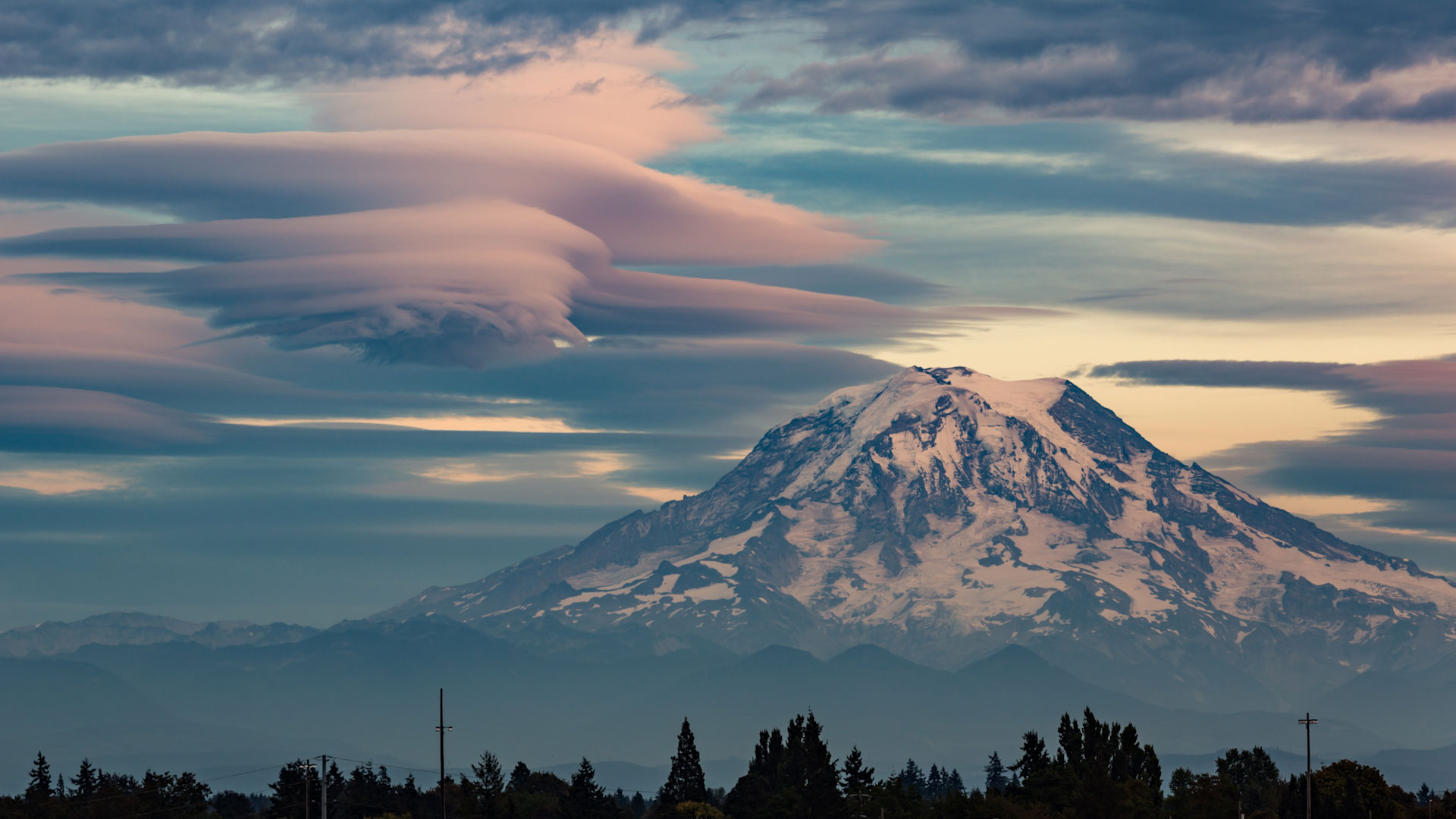
Time-lapse video of lenticular clouds over Mount Rainier, Washington (© Delrious/Shutterstock)
A peak in the clouds
World Meteorological Day brings us to Washington's Mount Rainier, a huge stratovolcano with a habit of creating its own weather systems. Jutting out about 2 miles above the surrounding landscape, its high altitude interrupts the flow of air that comes in off the Pacific Ocean, creating unusual weather such as the saucer-shaped clouds on our homepage. They're called lenticular clouds, and because of their distinctive appearance, they've been suggested as an explanation for some UFO sightings. Thanks for the science of meteorology, we know they're a normal weather phenomenon, commonly occurring on the downwind side of obstructions such as mountains, buildings, or other tall structures.
华盛顿州帕卢斯地区的农田 Farmland in Washington state's Palouse region (© Art Wolfe/Getty Images)

华盛顿州帕卢斯地区的农田 Farmland in Washington state's Palouse region (© Art Wolfe/Getty Images)
Harvest time in the Palouse
The Palouse region of inland Pacific Northwest is an unusually hilly prairie that straddles the state line between Washington and Idaho. Farming seems an unlikely endeavor here, but the land, and the weather patterns, make it ideal for wheat and lentil farming. This time of year, the soft white wheat harvest is on, as the crop turns from green to gold, and for the farmers, from harvest to profit. Before Europeans and early US settlers arrived, the Palouse was occupied by the Nez Perce people, who bred and raised horses with spotted coats—a breed that would eventually come to be known as 'appaloosas'—a gradual permutation of the name 'Palouse.'
The National Museum of the American Indian in Washington, DC © Cvandyke/Shutterstock
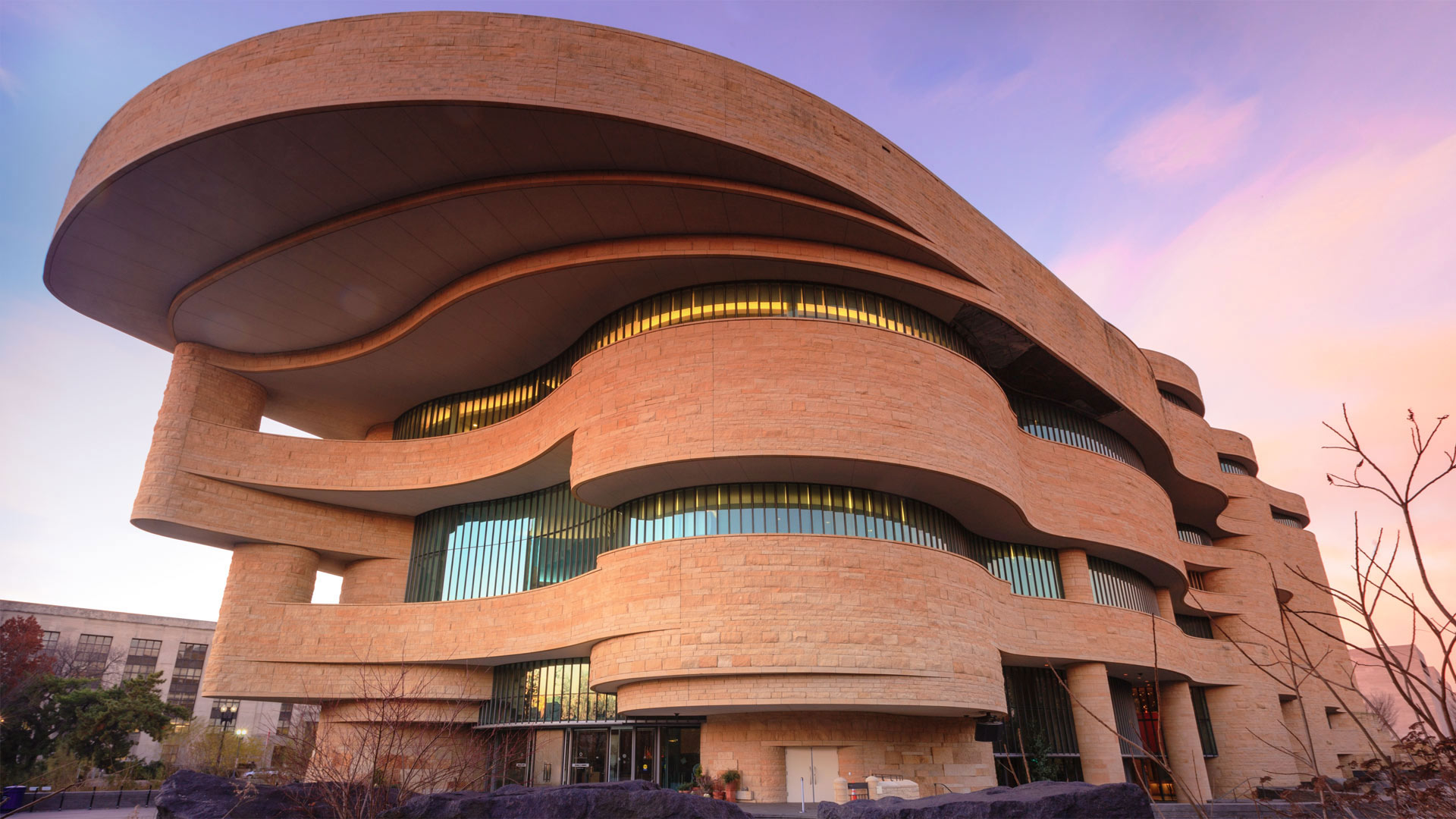
The National Museum of the American Indian in Washington, DC © Cvandyke/Shutterstock
DC is the place to be
The building in our photo today is the National Museum of the American Indian (NMAI) in Washington DC. It's part of the large network of the Smithsonian Institution, and has branches in New York and Maryland. All three share one of the world's largest collection of Western Hemisphere Native artifacts, ‘from the Arctic Circle to Tierra del Fuego.' Architect Douglas Cardinal drew on his Blackfoot cultural history to create the soft, curved lines of the building in the nation's capital. It's meant to evoke limestone cliffs, with rock walls smoothed by the elements. The landscape around the building simulates a wetland environment.
